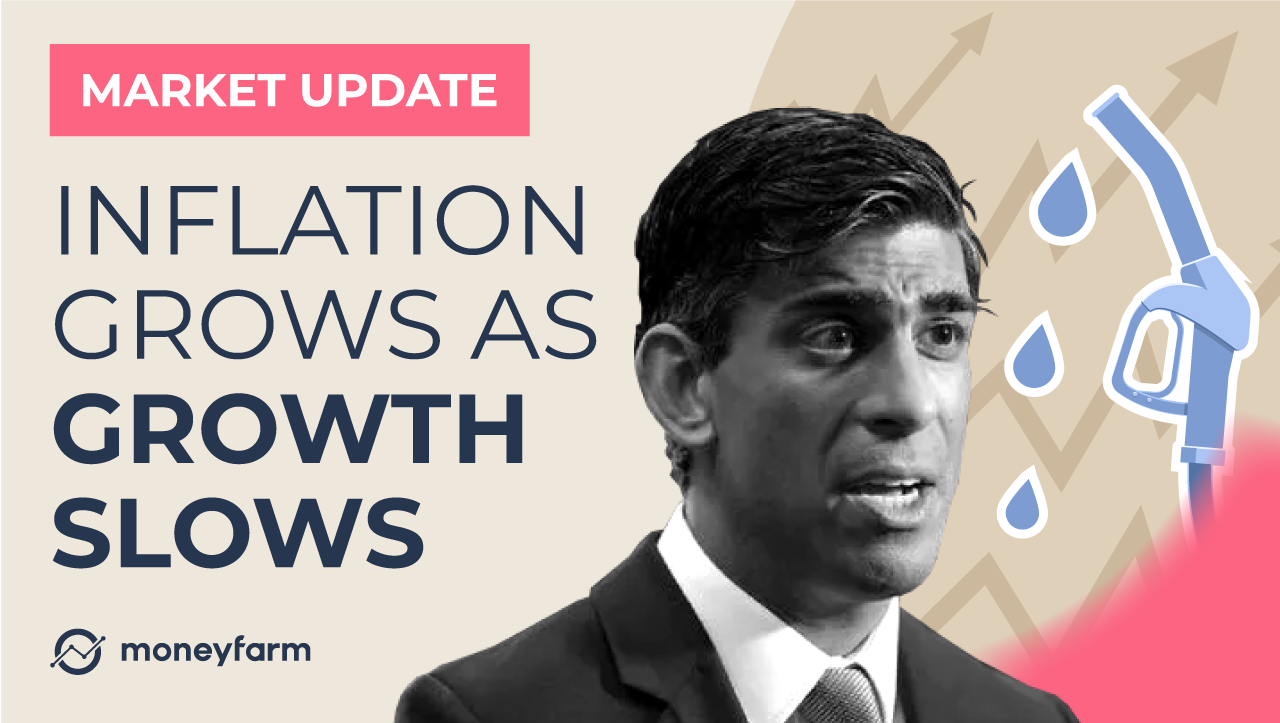Last month was a difficult one for financial markets. The ongoing crisis in Ukraine continues to weigh heavy on the news, on financial markets and on our thoughts. The economic consequences of the invasion are far-reaching and May saw some of them come to the fore.
June 2022 Monthly Market Roundup: Summary Table
| 🏦 As of June 2022, when has the Bank of England increased interest rates? | • February 2022: 0.5bps to 0.5% • May 2022: 0.05bp to 1.0% • June 2022: 0.05% to 1.25% |
| 📈 Raising interest rates has must pressure on? | Stock valuation as stocks with higher price-to-fundamental ratios suffer, negating the benefits of decorrelation |
| 💸 The UK GDP forecast is expected to grow in 2022 by? | 3.7%, a downgrade from 4.1% |
| ☹️ Who is causing supply-driven inflation? | China, as a result of its strict zero-Covid approach, has caused global inflation due to shortages in supply |
The last month was defined by high inflation and weak growth, both of which were carried over from April and may be with us for some time yet. Both the UK government and the Bank of England were forced to intervene to combat the situation. Interest rates were raised at the beginning of May, before UK Chancellor of the Exchequer, Rishi Sunak, announced plans for a support package to help families manage rising fuel costs.
Equities and bonds in April
The final couple of weeks of May did provide some respite, though, with equities and bonds closing the month essentially unchanged despite the dramatic start. Interest rate hikes, particularly in the United States, seem to have taken a break and, at least for now, the 3% threshold for the 10-year outlook appears to hold up. This offers an attractive yield to investors, especially in light of the ongoing volatility affecting equities.
Despite the respite towards the end of the month, equities continue to tell two different stories. On the one hand, we have the energy sector, which continues to benefit from ongoing economic and geopolitical tensions. In May, it saw a 12% return, bringing its year-to-date performance to 50%. On the other, we see equities related to discretionary consumption and technology suffer in an environment that isn’t favourable to growth stocks.
This relationship between equities and bonds continues to dominate market dynamics. Rising rates have put pressure on valuations, meaning that stocks with higher price-to-fundamental ratios suffer, negating the benefits of decorrelation. When the sell-off picks up pace and concerns about a possible recession grow, interest rates then stabilise and the volatility of the stock is matched by stability in bonds.
Analysing performance from a geographical point of view can offer interesting insights. European stocks continue to outperform, although in our view this doesn’t necessarily reflect stronger fundamentals, but rather the fact that European stocks are more on the value side and benefit more from the current financial environment. On the contrary, Eurozone government bonds are underperforming their overseas counterparts. Longer-dated German bonds lost 6.5% over the past month, while similar US treasuries lost 1.9%.
High inflation meets low growth
Over the course of May, fears around inflation began to be trumped by concerns about economic growth as the chief issue for markets. US GDP estimates have been downgraded over the past few months, affected by the expectation of higher interest rates and the fallout from the invasion of Ukraine.
GDP growth is a useful indicator of the state of the economy, but what we really care about in relation to our portfolios is corporate earnings. Earnings are the basis of corporate revenues and, by extension, the price investors are willing to pay for an equity share in a company’s earnings.
However, we ultimately want to be able to forecast a company’s earnings, rather than simply going on what they are currently. GDP growth can be helpful here to forecast the ability of companies to generate revenues in the future. Downgrades to GDP estimates haven’t yet been reflected in earnings expectations. These haven’t moved much for the US or Europe, while the UK has seen upgrades. Earnings forecasts may prove to be too high, given the downgrades to growth estimations, but time will tell.
China’s Covid policy causes problems
May also saw the focus return to China’s policy regarding Covid-19. Since the initial outbreak, China has led with a stringent zero-Covid approach, which has led to significant disruption in the country’s economy as entire areas are put into lockdown. These disruptions have, naturally, had an impact on the global economy.
Supply chains have felt the disruption most keenly, contributing to inflation globally as the price of goods increases as a result of shortages in supply. This kind of supply-driven inflation is particularly bad for the global economy. It contributes to stagflation pressures, whereby prices increase while growth is slowing since disrupted supply chains limit global trade.
Now, while recent weeks have seen lockdown restrictions eased in Beijing and Shanghai, there is no reason why these semi-regular disruptions could not continue into the future and continue to hamper the supply chain for at least the rest of this year.
As always, if you want to discuss anything related to financial markets or talk about your portfolio in more detail, don’t hesitate to get in touch with our team of investment consultants. We’ll be back in a month with another market roundup.





